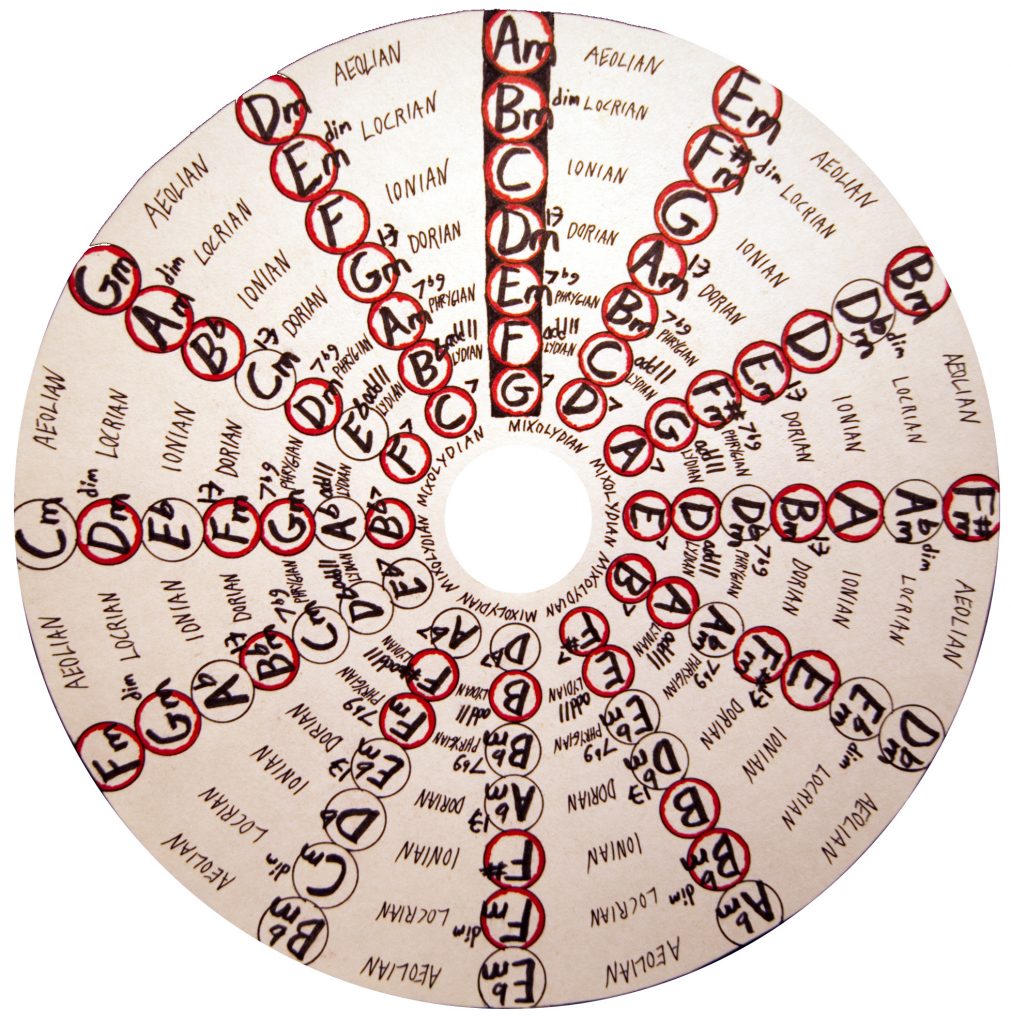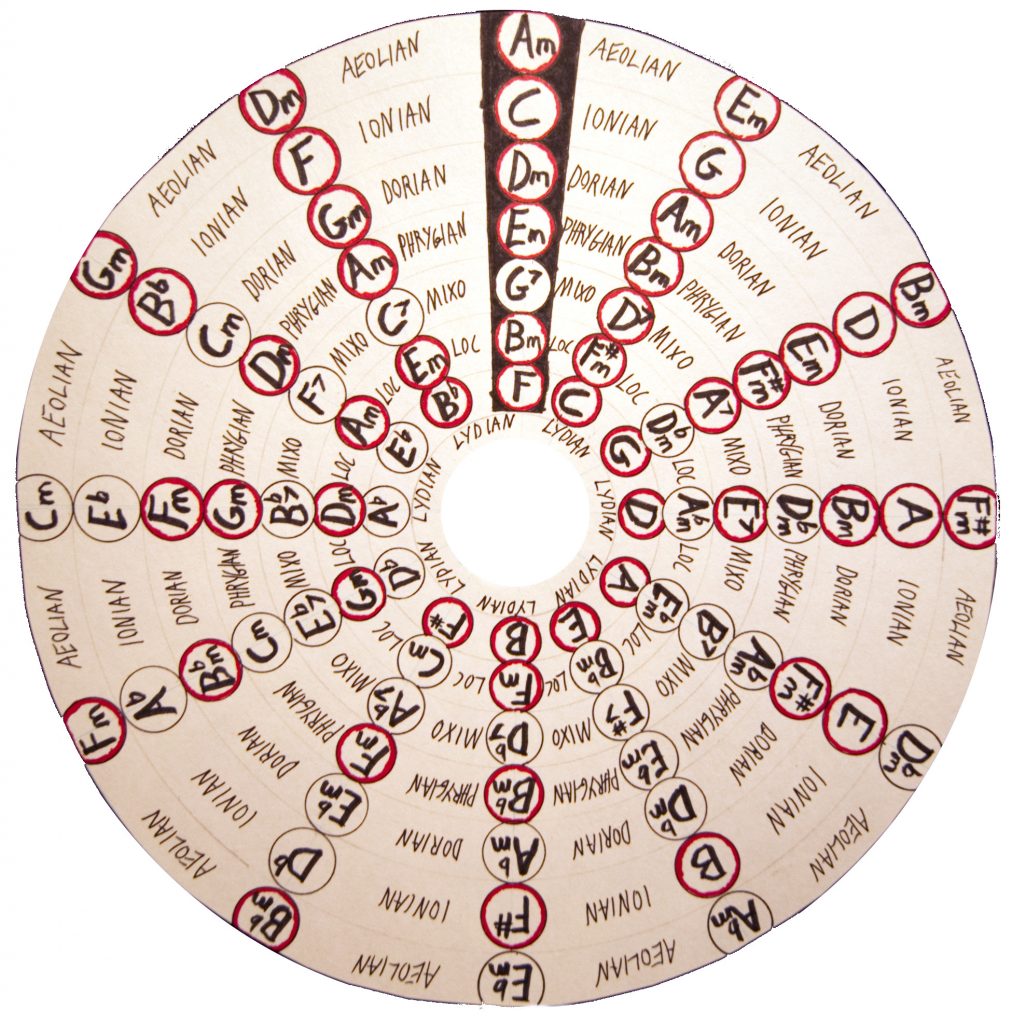Circle Of Fifths Reference Wheels
This post is something I’ve been promising: these are the chords I base my synthesizer music on. The idea is that I’m using Music Thing Modular Chord Organs, which I’ve hot-rodded, and I can apply control voltages to vary chords around any given location on this wheel. More randomness gives you more striking chord departures.
Rotating around the wheel (for ALL examples) means stepping by circle of fifths. For the two most recent wheels, the top set of chords (outlined in black) is actually the white keys on the piano. For each chord represented, if you START with that chord and stay in that mode it will be the mode written next to the chord (for instance, if you’re playing C Major, you’re in Ionian mode, and if you’re playing G7 major 7th you’re in Mixolydian mode). For every step to the side out of that radial stack of chords, one note changes out of the mode you’re using. Step farther (around the circle) and you go to increasingly difficult modes.
This is the Diatonic Wheel. As you can see, it starts with a scale from A to G, on the white keys of the keyboard. The first release of Airwindows Chord Organ Firmware comes with a set of SD card files that work with this wheel. On the down side, it has the locrian mode (centered on B minor diminished fifth chord) right in between major and minor, so it can give you chord sequences that are a little mysterious.
This is the Pentatonic Wheel. It’s exactly the same as the Diatonic wheel, except that I thought I’d see what happened if you went with only the pentatonic scale and stuck the two remaining notes in as afterthoughts. This one places minor, major, and dorian minor next to each other! It should produce more consistent chordal centers with a more defined ‘feel’ than the purely diatonic arrangement. If you offset the chord choice way into the center of the wheel, you’ll be choosing among phrygian minors flat ninths, mixolydian sevenths, locrian diminished fifths and lydian add11s so there’s a big character difference between the edge of the wheel and the center of it. There’s a certain logic to the arrangement, and I think functionally it’ll just work better. If you’re randomly generating a melody, you can leave the melody chord organ set to purely a diatonic scale and it’ll still work fine (melody generation implies you’re adding an independent control voltage to one of the oscillators, rather than using the same one that’s selecting chords/basses for everything else).
For further reference listen to some of the house music jams I’ve been doing for the last few years. That’s been the test bed for all this.
Click on the images to get larger images that you can save or print out. You can probably print these okay, and they’re easier to read if you can rotate the paper they’re on :)


I know I’m missing something obvious, but what is the significance of the red circles?
The red circles indicate what I consider to be easy to play guitar chords :)